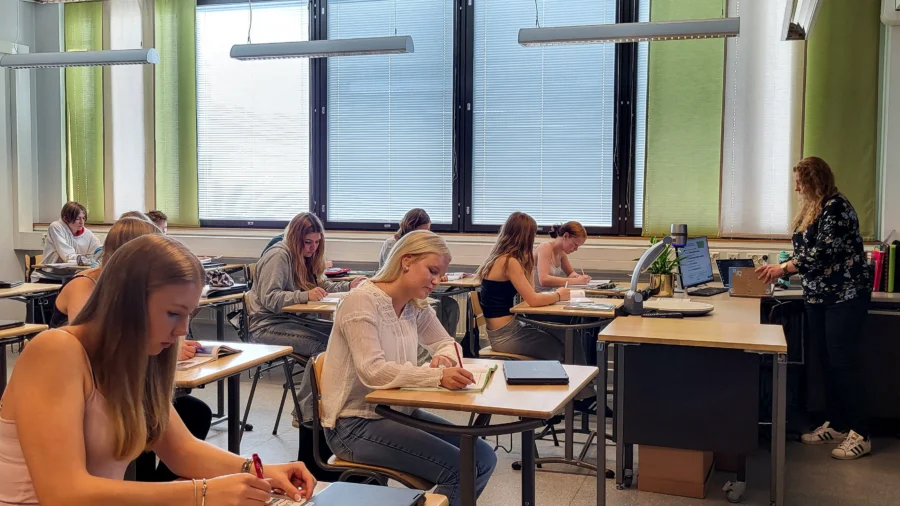RIIHIMAKI, Finland—This autumn, pupils in the Finnish town of Riihimaki headed back to school with backpacks full of books after a decade of state-backed promotion of laptops and other digital devices in the classroom.
Finland’s public education system has gained global renown for its good results in recent decades and its readiness to try new teaching techniques. Until recently, many schools gave laptops for free to all pupils from as early as age 11.
But Finnish parents and teachers, as elsewhere, have become increasingly concerned over the impact of screens on children.
So Riihimaki, a town of some 30,000 inhabitants 70 km (44 mi) north of Helsinki which since 2018 had stopped using most books in middle schools, is trying something different for the start of this academic year: going back to pen and paper.
“Young people are using phones and digital devices so much these days that we didn’t want school to be one of the places where children are only staring at screens,” said Maija Kaunonen, an English teacher at Pohjolanrinne middle school.
The constant distractions that come with the use of digital devices make many children restless and too flighty to focus.
“Most students just did the exercises as quick as they could so they could then move on to playing games and chatting on social media,” she told Reuters during a break in class.
“And it took them no time at all to change tabs in the browser. So when the teacher came round to them, they could say: ‘Yes, I was doing this exercise’.”
Across Finland, children’s learning results have been slowly eroding in recent years, prompting the government to plan new legislation to ban the use of personal devices, such as phones, during school hours to cut back on children’s screen time.
Improved Concentration
One of Kaunonen’s pupils, Elle Sokka, 14, said she did not always focus on the school subjects when learning digitally.
“Sometimes I would drift off to different websites,” she said.
Eighth graders Miko Mantila and Inka Warro, both 14, said their concentration has improved since books came back.
“Reading, for one, is much easier and I can read much faster from books,” Mantila said, though he added that writing was easier on a digital device.
“And if you have to do homework late at night, it’s easier to go to sleep when you haven’t just been looking at a device,” Warro said.
Minna Peltopuro, a clinical neuropsychologist working with the town on the change, said the total screen time should be cut to a minimum—Finnish teenagers currently stare at screen for up to six hours per day on average—as excessive digital use comes with both physical and mental risks, such as eye problems and growing anxiety.
“Another one is multi-tasking,” Peltopuro said. “The brain is very vulnerable to multi-tasking and especially at a young age one cannot manage it well.”
By Elviira Luoma and Anne Kauranen

